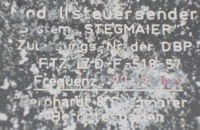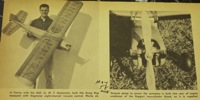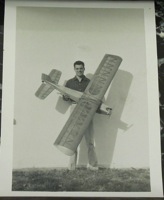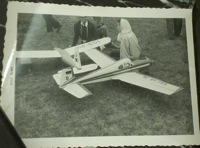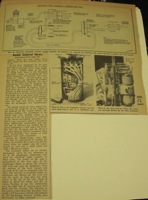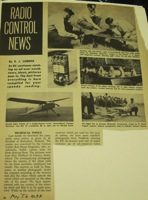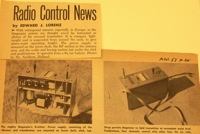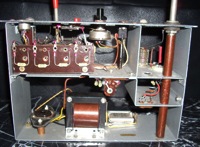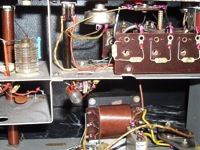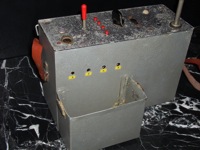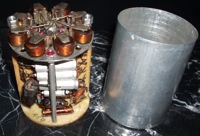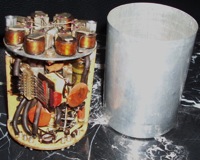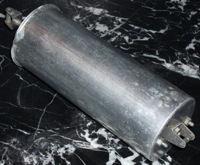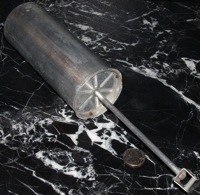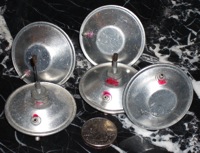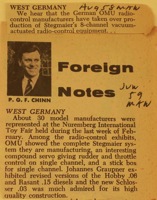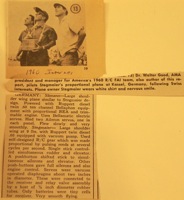Foreign Feature:
Stegmaier Vacuum RC System
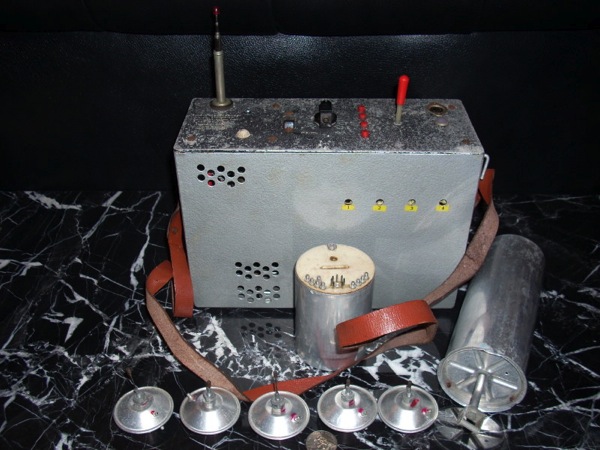
(Click on any of the images on this page to see a larger version)
The United States was the overwhelming leader in radio control development, but it was not alone. Other countries have a proud place in RC History. Perhaps the greatest example of this, the most impressive “foreign” contribution ever to RC development, was the Stegmaier Vacuum RC System.
Stegmaier Vacuum RC System
Above is one of the few remaining Stegmaier radio control systems in the world:
This was manufactured in 1957 by Karlheinz Stegmaier and his flying/business partner Helmut Bernhardt , in Berchtesgaden, Germany. Berchtesgaden is the picturesque Alpine village where Adolph Hitler had his spectacular mountain retreat.
Visionary Concept
This was an 8 channel reed system with a big difference. Control surfaces were actuated by vacuum “pressure” conveyed to diaphragms by hoses instead of by electricity conveyed to servo motors by wires. The system was visionary, advanced, sophisticated and way ahead of its time when it appeared in 1955.
But did it work? Did it ever. Karlheinz Stegmaier won numerous international competitions with his vacuum powered radio control system.
Our example was donated by Tom DeJarnette. DeJarnette was with the U.S. Army Air Force stationed in France in the 1950s. Tom was so impressed watching Stegmaier’s aerobatics at a French RC contest that he asked Stegmaier to make one of his vacuum systems for him. He paid $200 for this and picked it up at Stegmaier’s house in Frankfurt, possibly before official production of the systems had begun.
In May, 1958 Model Airplane News pictured Tom and his system. The close up shows the hand-made Rupert Twin Diesel specially built to power the Stegmaier system through a vacuum pump attached to its rear.
Here is the original photo used by MAN for this article.
Here is a 1958 photo of Stegmaier’s and Bernhardt’s planes ( the low wing beauty was Bernhardt’s, and you can see a Stegmaier receiver in the cockpit).
Model Airplane News Reviews
Inner Workings
Lets take a closer look at the components of this ingenious system. Here is the inside of the transmitter and the external holder for the 6 volt wet cell battery:
Here is the inside of the receiver with some of the original tubing still intact:
The weight of the receiver is 8.5 ounces compared to 9.2 ounces for a C.G. 8 channel receiver and 9.3 ounces for an Orbit 8 channel receiver, both contemporary U.S. reed systems.
The vacuum reservoir weighs only 3.0 ounces. It was quite vulnerable to crash damage; any dent could block the sliding action of the piston. Tom’s still works perfectly to this day.
Here are the vacuum actuators:
These wonderful devices weigh only 0.3 ounces each! Compare that to 1.9 ounces for a DMECO servo or 2.9 ounces for a Bonner “boxcar” servo. The weight savings of these servos was a major plus for the system. It was augmented by the smaller, lighter airborne batteries which the system could get by with since they only had to power tubes, reeds and relays—not servos.
The weight of the network of tubing was probably about the same as the normal network of wiring it obviated. Thus, the lighter weight of the receiver, actuators and batteries appears to have more than made up for any additional parts like the reservoir, and this would have given the system a major net advantage in the critically important area of airborne weight.
Sometime in 1958, the German concern OMU took over manufacture of Stegmaier’s vacuum RC system, as noted in these accounts:
In 1960, Stegmaier placed fourth in the first Internationals, held in Switzerland. Afterwards, he let the U.S. team leader, Walt Good, fly his modified proportional version of the Stegmaier system:
We are not sure what happened to Karlheinz Stegmaier after this. He may have just faded away in the face of rapidly developing U.S. RC systems. His vacuum concept ultimately proved to be a dead-end street in radio control development, the same fate as befell other RC innovators despite all their promise. See, for example, our Paul One exhibit.
But we are sure of one thing. Nothing can diminish Karlheinz Stegmaier’s towering achievement or his prominent place in radio control history.



